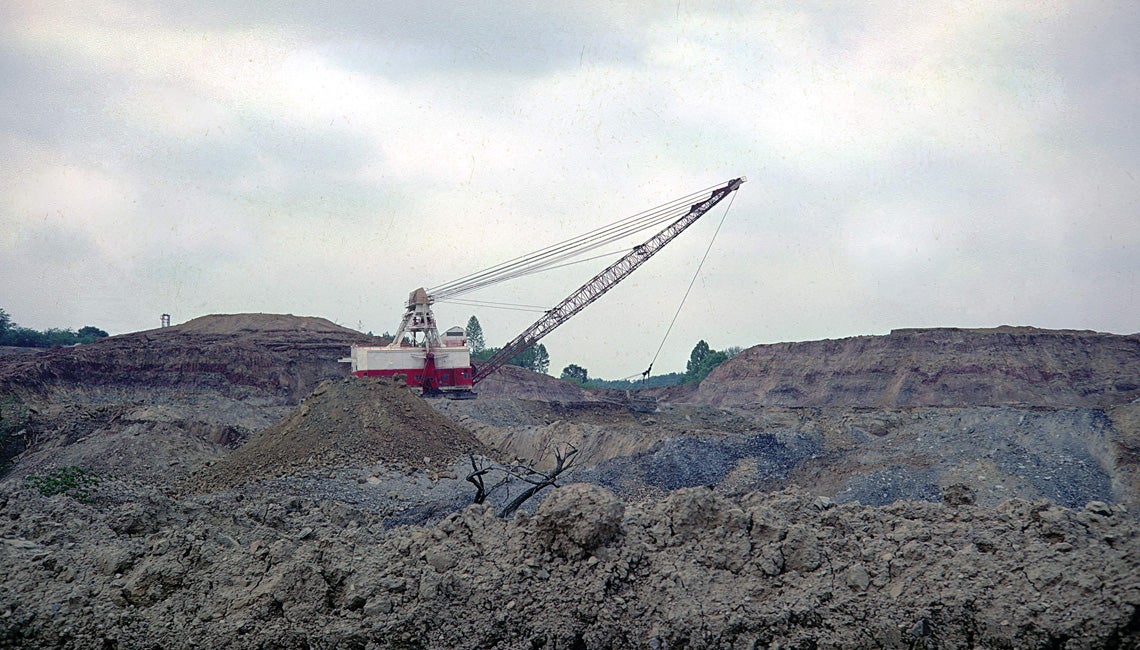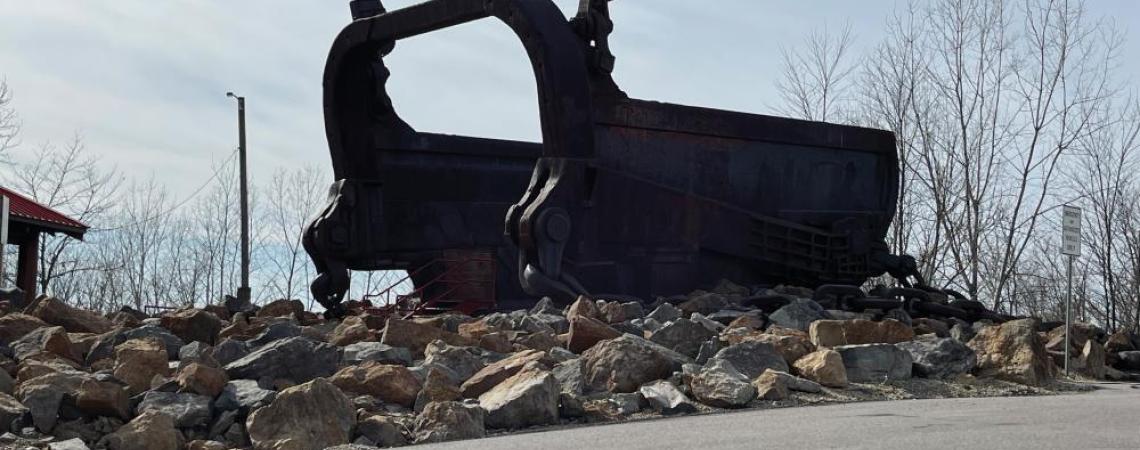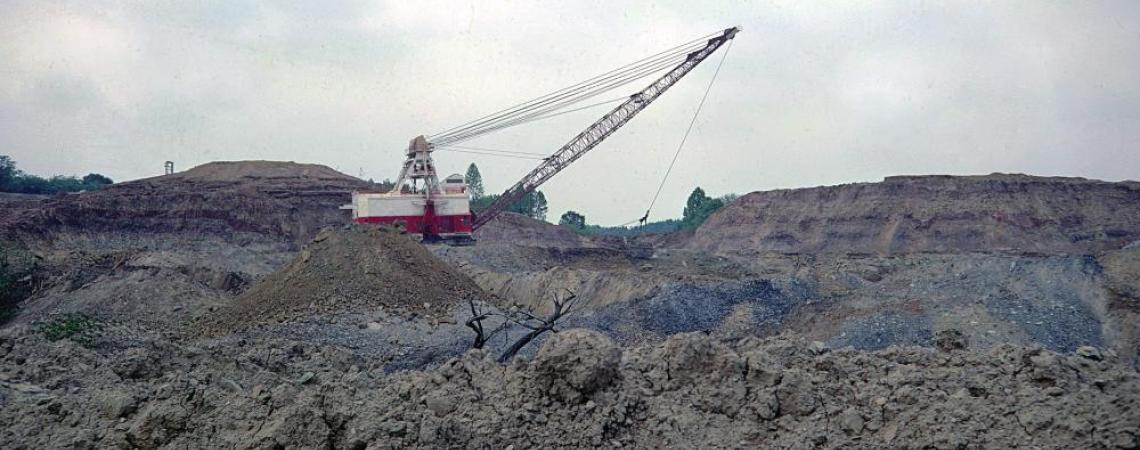Mentioned in most places, it will set an angler’s heart racing — but mention “Big Muskie” in southeast Ohio and it’s likely to bring on intense memories, curiosity, or the warm and fuzzy feeling that at one time, right here in Ohio, the largest dragline excavator the Earth has ever known operated for the Central Ohio Coal Company.
“I felt so blessed to run all that equipment,” says John Paul Reed, of Waterford, who says he ran all kinds of heavy equipment for the Central Ohio Coal Company back in the day. But Big Muskie, also known as the 4250 dragline, was the top of the heap. “If anybody ever finds out you worked with Big Muskie, they have all kinds of questions.”
The massive machine was constructed by the Bucyrus-Erie Company. It stood more than 222 feet tall, its boom reaching out 310 feet, and it moved at a blistering pace of about 9 feet per hour. Big Muskie was constructed on-site in Morgan County — it took 340 rail cars and 260 trucks to ship all its components, followed by more than 200,000 man-hours to assemble. It weighed 27 million pounds and cost $25 million ($200 million today), and operated for 22 years — from 1969 until 1991.
In total, the machine moved about 608 million cubic yards of material at the coal mine. But it never moved coal, which is something most people don’t realize. Big Muskie scooped away dirt and stone, called overburden, so that smaller machines could come in and scoop coal from the seams.
According to Reed, the coal seams could be as much as 140 feet or more beneath the surface and could run anywhere from 18 inches to 3 or 4 feet thick. After the smaller excavators removed the coal, Big Muskie and its crew replaced the overburden where it had been.
Reed was an all-around company guy, running massive bulldozers, pumping water from ponds, and anything else needed — including keeping Big Muskie’s components well-oiled. That included the 330-foot twin booms.
“When it shut down, we’d climb the boom and make sure everything was OK,” he says. “Make sure the lines were greasing and there were no broken lines and everything was getting properly lubed so you wouldn’t have a bearing go out.”
It took seven men to make Big Muskie work: an operator, two oilers, two dozers, a welder, and an electrician — and more help was available if needed. One of those electricians was McConnelsville resident Dave Bailey, who worked on Big Muskie for a decade.
“I was on it until the very last day it operated,” he says, wistful pride in his voice. “I worked on anything that had to do with the electrical systems. And most people don’t know it, but Big Muskie ran on electric. It took about two-thirds the power of Las Vegas. We were highly trained and certified by the federal government.”
Like Reed, Bailey says that when folks find out he worked on Big Muskie, they've got questions.
“Oh many, many questions about just everything,” he says. “But I never get tired of talking about it. We operated 364 days a year — off Christmas.”
Evolving EPA regulations through the 1980s meant diminishing demand for Ohio’s high-sulfur coal, and that meant Muskie’s digging days were numbered. They ended in 1991, beginning a period where she sat idle. Attempts to turn the behemoth into a museum or turn it over to the state as a tourist attraction failed. It was finally dismantled for scrap in 1999, marking the end of an era in Ohio’s coal country.
McConnelsville Mayor John Finley says the heyday of strip mining in the region is long gone, but that other things have come along where it happened.
“The state took over a bunch of property over there. They have lots of hunting and fishing out there and it’s a very beautiful place, very rural and wooded with a lot of forest. It’s very nice,” he says.
In fact, the area where Big Muskie and smaller draglines once unearthed coal is now home to The Wilds, 10,000 acres of reclaimed land that is home to a menagerie of animals including rhinoceros, giraffes, wild horses, zebras, ostriches, camels, and other exotic creatures.
In 2018 much of the rest of the original 60,000-acre mine was purchased by the Ohio Department of Natural Resources and is now Jesse Owens State Park.
After Big Muskie was dismantled and removed from the former strip mine, all that remained was the dragline bucket. It was moved, all 240 tons of it, to ODNR land that is now Miner’s Memorial Park near McConnelsville, which features an informational kiosk as well as the bucket, which could move 325 tons of overburden per scoop — you have to see it in person to get a true sense of just how big that thing is.
Employees of the Central Ohio Coal Company stay in touch through a Facebook page where they share memories and photos. And of course, they often visit the bucket.
“A friend of mine came up here last year; he worked at Ground Zero during 9/11, so he liked big iron and all that stuff, and he was really, truly amazed at how big it was,” Reed says.
Exotic animals of all shapes and sizes now roam former strip-mined lands, and tens of thousands of people now camp, fish, kayak, hunt, and hike there. But the fond memories of Big Muskie will forever remain, like the once-sought coal buried in Ohio’s rolling Appalachian foothills.
To see it: Big Muskie’s bucket resides at Miner’s Memorial Park, within Jesse Owens State Park, 4470 State Route 78, McConnelsville, 43756.











